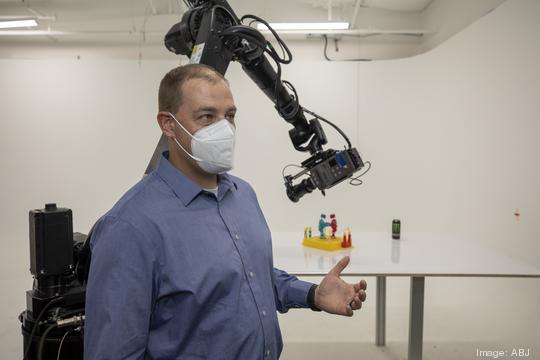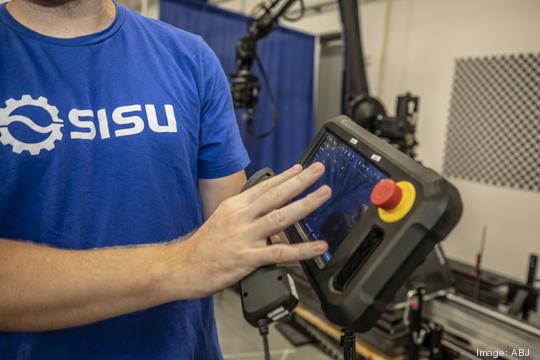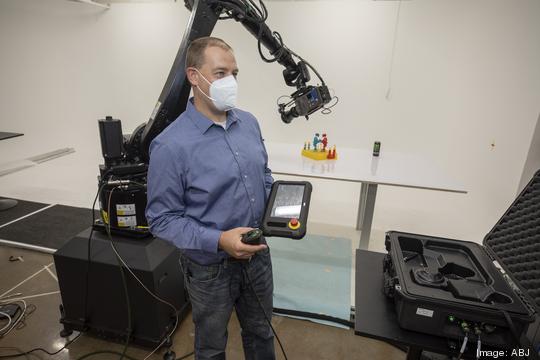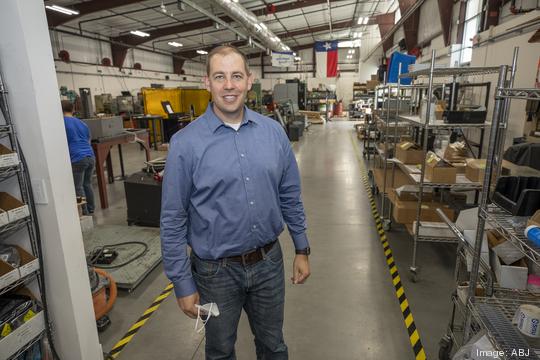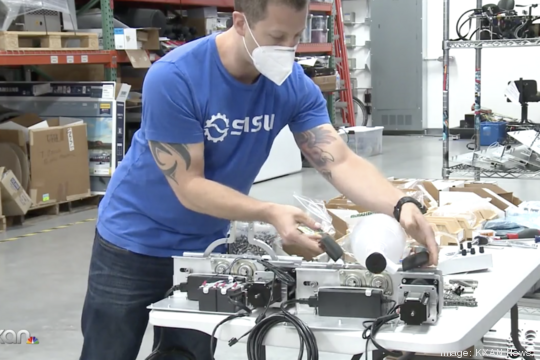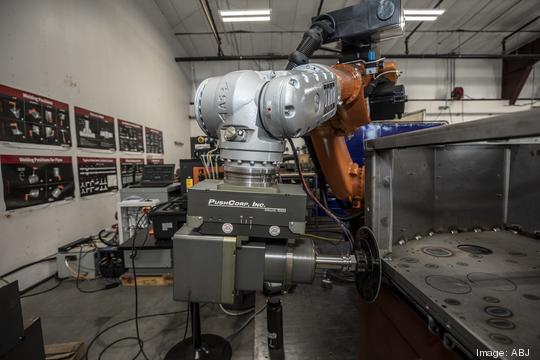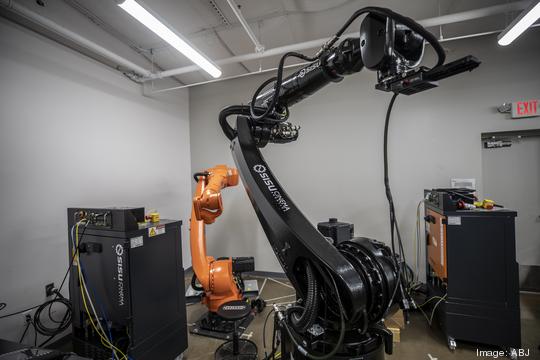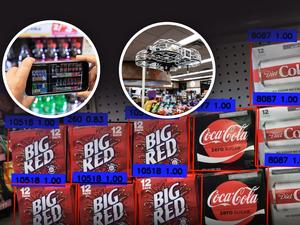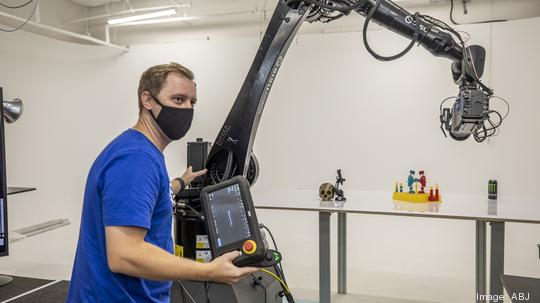
You've probably seen it a thousand times — a TV commercial with a bowl of cereal and berries sitting there while milk as white as paint splashes around in slow motion. A camera pans and zooms to catch every delicious angle.
That few seconds of footage can take dozens, if not hundreds, of takes to get just right. But with a robotic arm clutching a camera and following a precise path, a couple hours might yield a glamour shot, especially if you have another robotic arm pouring the milk.
This is where Sisu Cinema Robotics is making its play. After starting out of a garage doing one-off custom robotics projects in 2010, co-founders Russell Aldridge and Marc Christenson, both former employees at Austin tech company NI, had someone suggest putting a camera on the robotic arms.
"So to humor them, we put it on Instagram, and we sold several of them just from Instagram posts," Aldridge said. "So we're like, 'okay, maybe this is the thing.' So we really kind of switched the whole direction of the company."
The Round Rock company, which has also developed robotic knife sharpeners and welders, is now making inroads with local and global film crews. Among those using the robotic arms is HBO, which used it to film parts of its "Full Bloom" series focused on florists.
There are other robotic camera arms out there. But Sisu thinks it has an edge.
After getting robotic arms and motors from Germany robotics company KUKA, the company builds the rest of the arm's foundation, the camera-controlling hardware and operational software in-house in its 17,000-square-foot office at 1520 Royston Lane in Round Rock. It has also focused on simplicity to give it an advantage over competitors with more complicated interfaces and software that require trained technicians to operate.
"We thought, what if we kind of gamified this? What if we put an iPad in one hand and a game controller in the other hand, and when people move this controller, the robot follows their hand," Aldridge said. "And then anybody can program this, they don't have to be a robot programmer."
Sisu Cinema Robotics
Sisu makes several sizes of its robotic camera arms, each operated by a computer and customized game controller. The company is housed in a former machine shop where software developers, hardware developers, robotics programmers, welders and machinists work together on the patented components and programs that attach to the arms.
The company was bootstrapped for its first 10 years. After launching its cinematic robots, it landed an undisclosed amount of private equity investment from an undisclosed investor last year, Aldridge said. That helped Sisu build onto its headquarters, which is already bursting at the seams with robotic arms, CNC machines and office space for its roughly 50 employees.
The company sells the robotic arms for around $100,000, depending on the model. It also has what it calls robots as a service, which is similar to renting the arms with support from Sisu.
Aldridge, who moved to Austin from Utah for a job at National Instruments, which is now known as NI, said he and Christenson started Sisu to experiment with a variety of robotic applications.
"We built a life-sized version of Rock 'Em Sock 'Em Robots. He's six-foot-tall robot," he said. "We did a demo for the Boy Scouts where these robotic arms tied knots. And so you could move your right hand, your left hand, and these sensors would look at your hands and the robots would follow your hands.
"That's kind of where the idea from this came from," he said, standing in front of one of Sisu's robotic camera arms in a break room that has been converted into a studio.
While Sisu is now known mostly for its camera arms, it has also developed a robot that can quickly and accurately sharpen knives. That's being used by large meat packing plants, Aldridge said, where consistency of sharpness impacts safety and productivity. Meanwhile, it has welding and grinding robotic arms used by industrial and machining clients.
In 2020, as the pandemic took over the world, Sisu quickly shifted gears to design and build ventilators because supplies at hospitals were stretched thin.
Aldridge said a design cycle typically lasts three months. With the ventilators, they designed everything in one day, fabricated parts overnight with help from local machine shops and tested them in the morning before sending them to New York for testing on mannequins at hospitals.
"It was just a crazy, crazy time," he said.
Flash forward to summer 2021, and the company is now developing a robotic track that carries the robotic camera arm at high speed as the arm makes its adjustments to keep things in frame. And it has big plans for the future.
"Even the smaller cinematographers are like, 'I can do all my stuff four times as fast, so I can take on more jobs and make more money,'" Aldridge said. "They can be very competitive with their pricing, they can get more work. And so our vision is for not just the Netflixs and HBOs... but for everybody to have one of these things and for it to be an indispensable piece of equipment for them."

